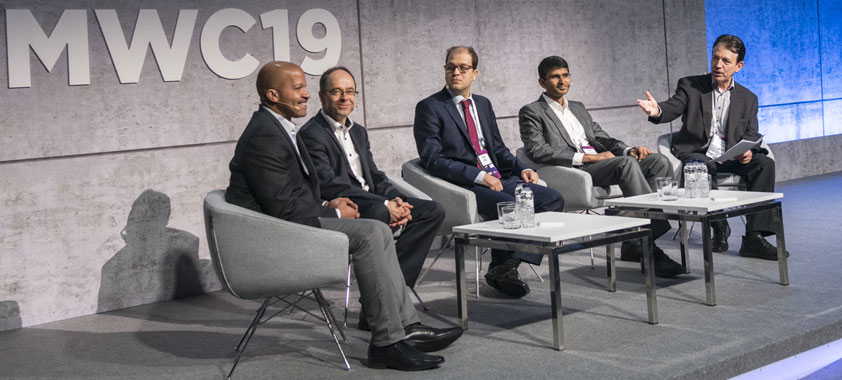

HOW ‘TALKING’ AND ‘LISTENING’ VEHICLES COULD MAKE ROADS SAFER, CITIES BETTER
Back in 1868, English engineer John Peake Knight invented the world’s first traffic light to help people move through a congested London intersection that had become dangerous for pedestrians due to the popularity of horse-drawn carriages. At Ford, 150 years later, we are excited to continue advancing this type of thinking by committing to deploy cellular vehicle-to-everything technology — or C-V2X — in all of our new vehicle models in the United States beginning in 2022.
C-V2X is a wireless communication technology that can “talk” to and “listen” for similarly equipped vehicles, people and traffic management infrastructure such as traffic lights to relay important information and help make city mobility safer and less congested. Planned alongside the rapidly building 5G cellular network, C-V2X enables direct communication between the connected devices, meaning a signal doesn’t need to first travel to a cellular tower, allowing vehicles to quickly send and receive information. Ultimately, it lets drivers know what’s ahead of them even before they have to encounter it.
Navigating four-way stops becomes much easier with C-V2X, for example, since vehicles will be able to communicate with each other to negotiate which one has the right of way. In the same way, a car that’s involved in an accident can relay its status to approaching vehicles, giving them advance notice of a potentially dangerous situation. Even a pedestrian equipped with a mobile phone could convey their location to other vehicles, ensuring that everyone on the road is aware of people who may be out of their direct line of sight.
Communicating with infrastructure such as stoplights and road signs, meanwhile, means cities have even easier ways of making sure drivers get the information they need to move more freely and safely. With C-V2X, a traffic light can send signals alerting drivers about when it will turn green or red, or whether a driver is at risk of running a red light.
Road signs could provide advance warning of recent accidents or provide more context regarding road construction, giving drivers the opportunity to reroute or more safely move through work zones. Further out, cities could even use this technology to enable smart vehicles to “talk” to smart traffic management systems to create better flowing transportation systems.


An example of how vehicles with cellular vehicle-to-everything technology can ‘talk’ to one another and the world around them.
Our move to deploy this technology builds on our prior commitment to equip every model we release in the United States with conventional cellular connectivity by the end of 2019. C-V2X will work with Ford Co-Pilot360™, our advanced suite of driver-assist and safety features standard across North America on new passenger cars, SUVs and trucks, including F-150, going forward.
Driver-assist technologies today and autonomous vehicles of the future utilize on-board sensors much in the way people use their eyes to navigate complex environments. C-V2X could complement these systems in ways similar to how our sense of hearing complements our vision to improve our ability to operate in a complex world.
C-V2X will enable vehicles to receive updates about potential traffic developments and risks that are beyond the range of what sensors can pick up, provide warnings or could even be tuned to activate Ford Co-Pilot360’s automatic emergency braking system to brake for drivers if they do not respond.
With plans to roll out 5G cellular networks underway, C-V2X can complement the sensors of self-driving cars. While these vehicles will be fully capable of operating without C-V2X, the technology could add to its comprehensive view from the LiDAR, radar and camera sensors. For instance, if emergency vehicles were equipped with C-V2X transmitters, they could notify self-driving vehicles that may be on their route so the vehicles pull over or reroute in plenty of time. Self-driving vehicles could even get real-time updates on road conditions that affect their routes.
A conducive regulatory environment must be in place for C-V2X to be deployed, which is why we are working just as much with industry and government organizations to create such a technology-neutral environment. This technology will only live up to its full potential if many vehicles on the road as well as roadside infrastructure take advantage of it. That’s why we are inviting other automakers, infrastructure and road operators, as well as government agencies to work with us to accelerate momentum for C-V2X.
Billions of dollars already are being spent as the cellular industry builds 5G networks, so we think the timing is perfect to give our vehicles some of the natural skills we use every day to get around.
By Don Butler, executive director, Ford Connected Vehicle Platform and Product












